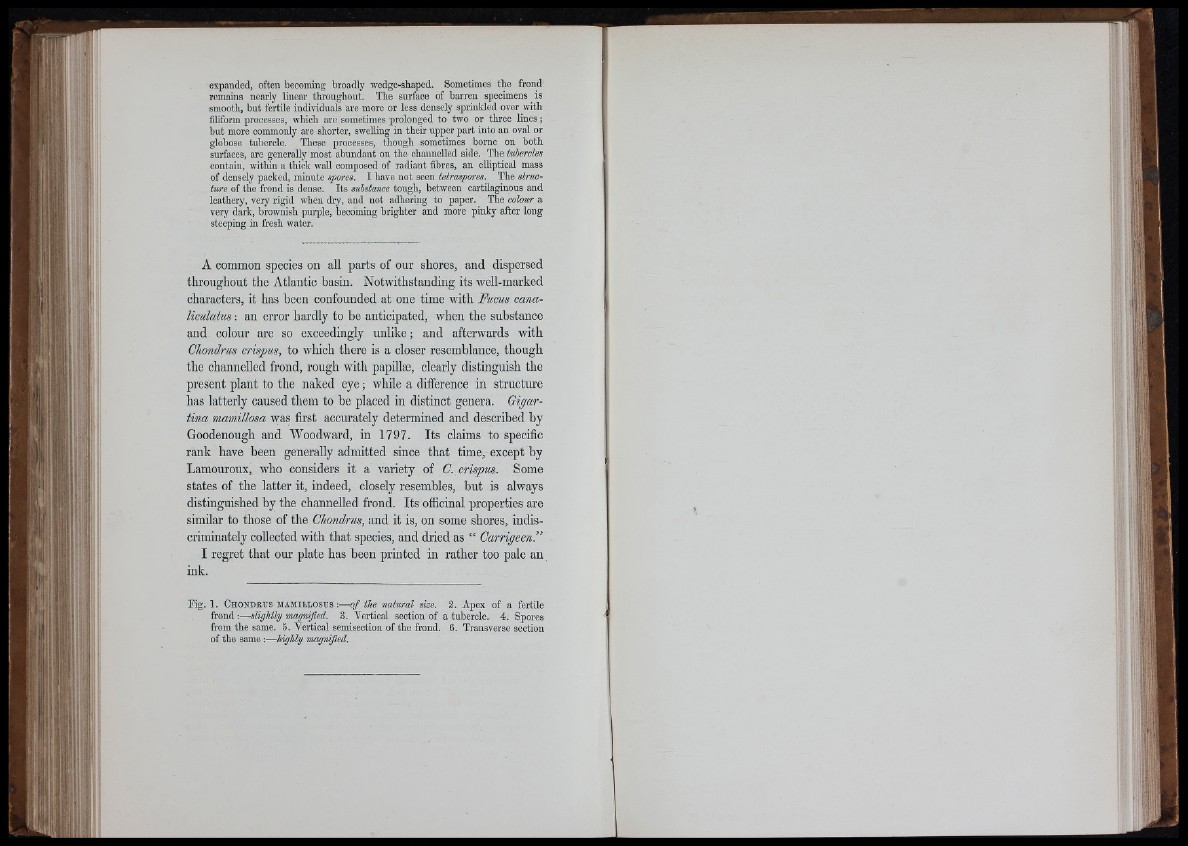
W:
lifo:
''"i
j
x i :
Il ., J
,fov
fovr
!' i'im
li;
expanded, often becoming broadly wedge-shaped. Sometimes the frond
remains nearly linear throughout. The surface of barren specimens is
smooth, but fertile individuals are more or less densely sprinkled over with
filiform processes, which are sometimes prolonged to two or three lines;
but more commonly are shorter, swelling in their upper part into an oval or
globose tubercle. These processes, though sometimes borne on both
surfaces, are generally most abundant on the channelled side. The tubercles
contain, within a thick wall composed of radiant fibres, an elliptical mass
of densely packed, minute spores. I have not seen tetraspores. The structure
of the frond is dense. Its substance tough, between cai’tilaginous and
leathery, very rigid when dry, and not adhering to paper. The colour a
very dark, brownish purple, becoming brighter and more pinky after long
steeping in fresh water.
A common species on all parts of our shores, and dispersed
throughout the Atlantic basin. Notwithstanding its well-marked
characters, it has been confounded at one time with Fucus canaliculatus
: an error hardly to he anticipated, when the substance
and colour are so exceedingly unlike; and afterwards with
Chondrus crispus, to which there is a closer resemblance, though
the channelled frond, rough with papillæ, clearly distinguish the
present plant to the naked eye ; while a difference in structure
has latterly caused them to be placed in distinct genera. Gigartina
mamillosa was first accurately determined and described by
Goodenough and Woodward, in 1797. Its claims to specific
rank have been generally admitted since that time, except by
Lamouroux, who considers it a variety of C. crispus. Some
states of the latter it, indeed, closely resembles, hut is always
distinguished by the channelled frond. Its officinal properties are
similar to those of the Chondrus, and it is, on some shores, indiscriminately
collected with that species, and dried as “ Carrigeen!’
I regret that our plate has been printed in rather too pale an
ink.
li
frond :—slightly magnified. 3. Vertical section of a tubercle. 4. Spores
from the same. 5. Vertical semisection of the frond. 6. Transverse section
of the same:—h ' " I
Fig. 1. C h o n d ru s m am illo s u s :— of the natural size. 2. Apex of a fertile
i i
' i J